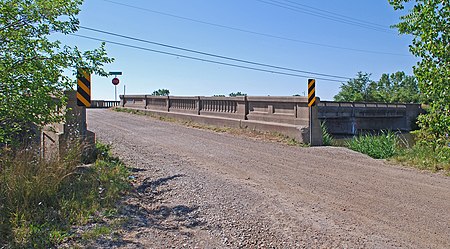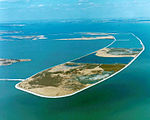Jefferson Avenue–Huron River and Harbin Drive–Silver Creek Canal Bridges

The Jefferson Avenue–Huron River and Harbin Drive–Silver Creek Canal Bridges are two separate bridges, sharing a continuous railing, that were jointly listed on the National Register of Historic Places on February 10, 2000.The Jefferson Avenue Bridge carries West Jefferson Avenue (known south of the river as the U.S. Turnpike) across the Huron River, which connects Brownstown Charter Township in Wayne County to Berlin Charter Township in Monroe County. Along with the Clinton–Kalamazoo Canal and Main Street Historic District, it is one of three properties listed on the National Register in Michigan to span two counties. The Harbin Drive Bridge is located entirely within Wayne County. Both bridges are located about one mile (0.6 km) inland from Lake Erie on a historically important route between Detroit and Toledo. The Jefferson Avenue Bridge is also designated as a Michigan Historic Site.
Excerpt from the Wikipedia article Jefferson Avenue–Huron River and Harbin Drive–Silver Creek Canal Bridges (License: CC BY-SA 3.0, Authors, Images).Jefferson Avenue–Huron River and Harbin Drive–Silver Creek Canal Bridges
U.S. Turnpike Road,
Geographical coordinates (GPS) Address Nearby Places Show on map
Geographical coordinates (GPS)
| Latitude | Longitude |
|---|---|
| N 42.042222222222 ° | E -83.214444444444 ° |
Address
U.S. Turnpike Road 11299
48179
Michigan, United States
Open on Google Maps











